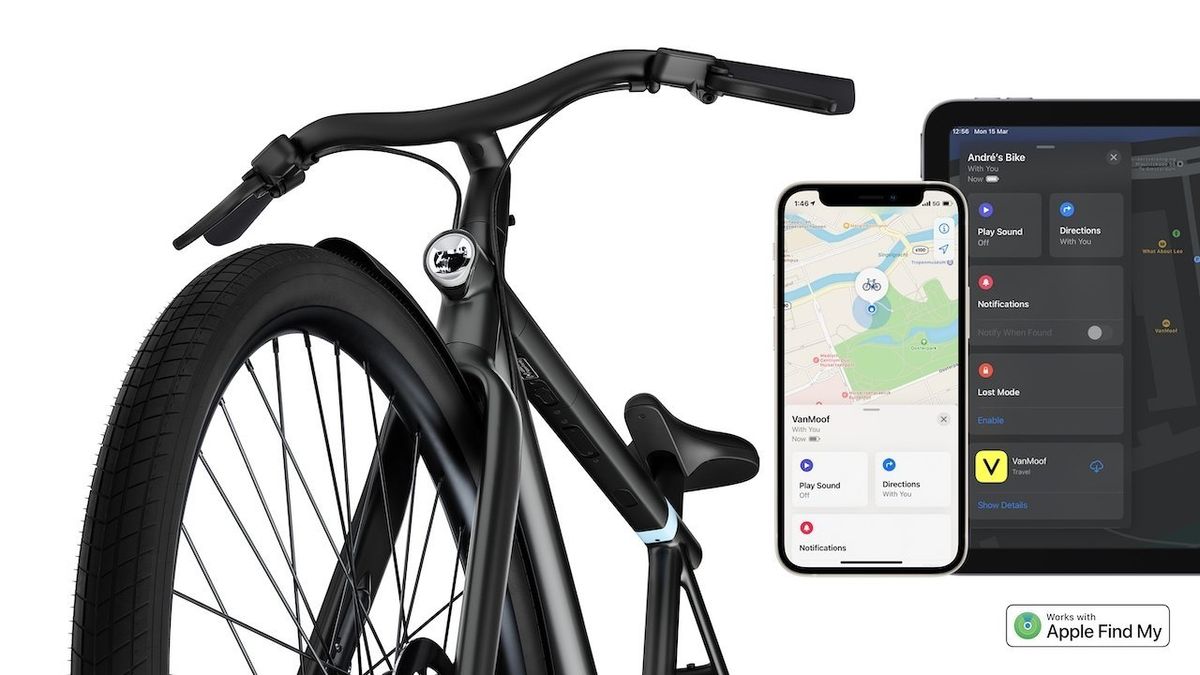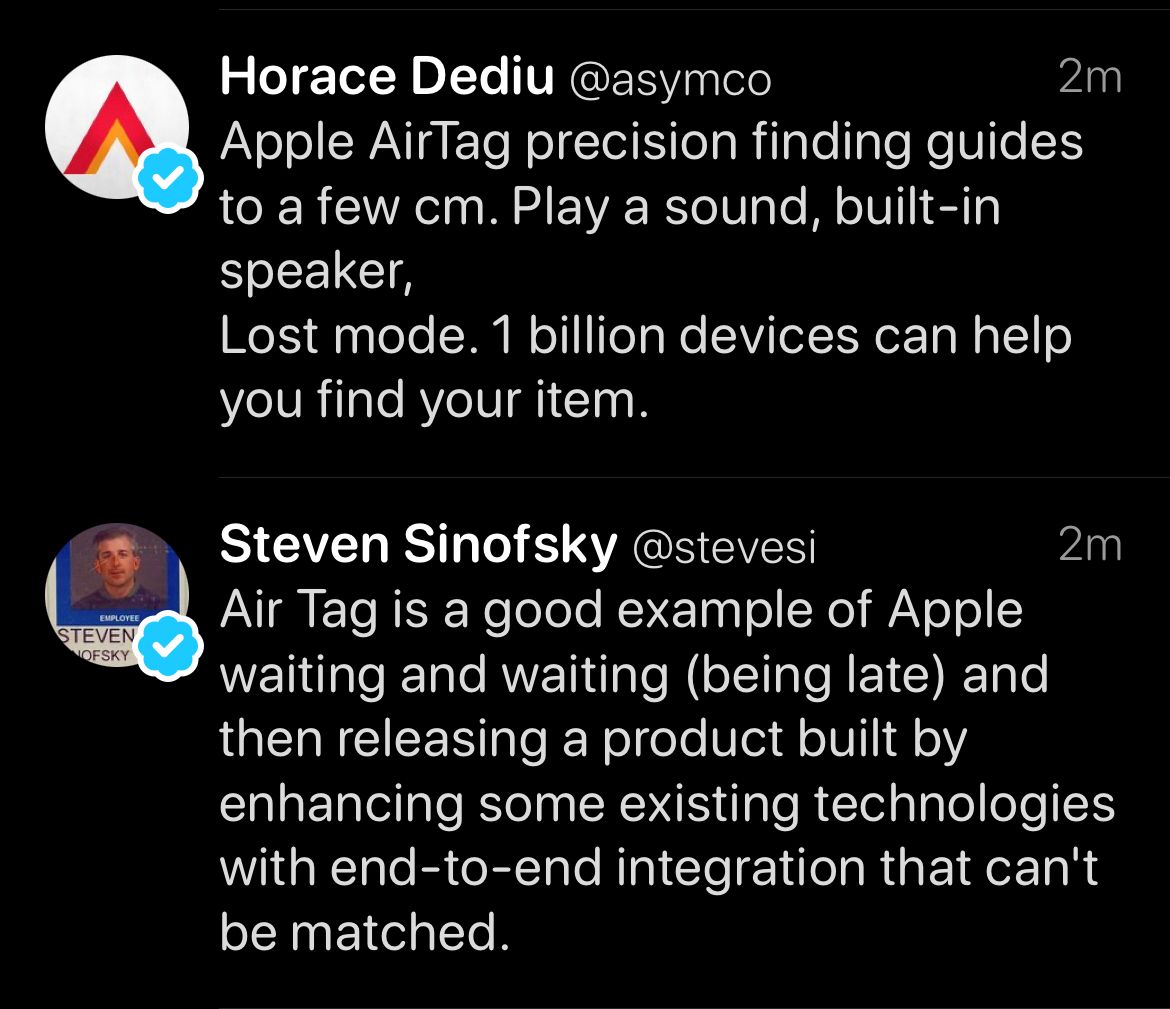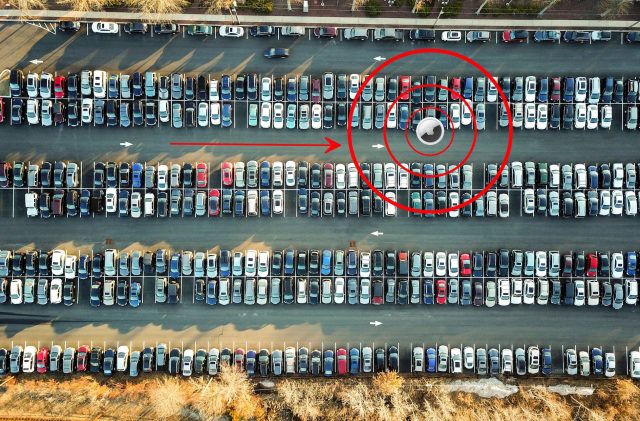My Apple AirTags Lightbulb Moment
With all the talk about Apple's expected AirTags, it's easy to overlook the key point: Apple's Find My network. The opportunity this presents to enterprise inventory tracking and AR enrichment is huge. I'm surprised it took me so long to realize.

Apple has an event next week. AirTags have been expected for a while (about 9 months by my recollection, though the exact timing doens't really matter). Consensus seems to be that they'll be announced (finally!1).
It's natural, at least it was for me, to think of AirTags as a way to track our keys or our backpacks, and wonder. Why would Apple really care about this? I mean, cool. But meaningful? Hardly.
Earlier this month, Apple announced that they've enabled the ability for third parties to take advantage of the Find My network, and shared that three 3rd parties are adding support. It was a curious announcement.
Find My network vs AirTags
Notice, the emphasis on Find My network. I knew about this, but didn't consider its importance until the announcement about 3rd party devices sunk in to my addled brain.

Apple's Find My technology uses Apple devices' Bluetooth wireless signals to create a network of devices looking out for lost items. The process is end-to-end encrypted and anonymous, so that neither Apple nor the manufacturer of a Find My object knows where it is.
I'm a fan of the Micromobility podcast. I think micromobility is a big trend and is going to change the way we live. In fact, I hope it does. Listening to the podcast, I learned that loss is a big problem for fleet management.
Reading Above Avalon's discussion about Apple's announcement, Neil shared an article where the CEO of VanMoof, a bicycle maker who's one of the three companies who have announced support for Find My, said:
VanMoof already had a service to find the location of your bike, but Job [Stehmann] admits that this can never be as good coverage as Apple's, simply because there are many more Apple users than VanMoof cyclists. The proprietary solution uses a combination of 3G / 4G technology and triangulation to determine the location of a bicycle. You then know roughly where a bicycle is and the location is determined locally with Bluetooth. This location determination is mainly aimed at intervention in the event of theft.
The Find My function has a completely different approach, according to Job, because this is a service with which you as an individual can track your bicycle. The technology is also different, namely based on a mesh network of devices based on Bluetooth 5. Find My is not about stolen products, but about lost products. And because it's linked to your Apple ID, only you have the location info.
I connected this conversation with what I learned from the Micromobility podcast, and quickly reached out to Mr. Micromobility, Horace Dediu, for confirmation:

And, so it goes.
It reminds me of something I wondered about many years ago. I was on the monorail in Newark Airport. Looking out the window, I saw a ladder laying on the roof of a building and wondered... does anyone know that ladder is there?
This feels like a big opportunity. Not only from the "finding of lost things" perspective. More importantly is the AR perspective. Not only will Apple and Find My tell you where all your "things" are if they're lost or stolen... maybe those things can even tell you something about themselves when you glance in their direction.
It also seems like a pretty big competitive advantage for Apple. I'm excited to see this play out.
1 This is a joke. The "finally joke" is a long-standing inside baseball thing for Apple, adn I couldn't resist.
Update 4/20/2021
It appears I missed this from the 6th of April: Apple launches app to help companies creating products that tap into the Find My network test their products. Not surprising, but it does point to the opportunity for lots more "things" to tap into Apple's invisible network of devices.
And, a second update today, after reading through twitter's filter on the Apple Event (I'll watch it later):

These two tweets came in together on my timeline, and I thought they worked well together. Steven really captures (as always!) the key thing. The end-to-end integration represented by the billion+ devices that are connected to help you find your item. Like the Apple Watch, this is not something anyone else can replicated (you don't have a smart watch market, there's an Apple Watch market).
And Ben Evans shared too:
Apple announced a lot of stuff that’s the dividend from a great, well-executed strategy - faster chips and tight integration. But the really interesting thing is the wireless network behind Airtags, which they’ve talked about for a while… https://t.co/yOg48bCbxd
— Benedict Evans (@benedictevans) April 20, 2021
Update 4/23/2021
Here's another update, from the perspective of spacial computing. Ever since Apple did that minor upgrade in March of '20 on the iPad Pro to include LiDAR, it was clear they were building towards something spacial.
Like with tags to track keys, glasses are the shiny light to get people excited about spacial computing. However, as an investor and thinker, I like to understand where Apple's economies of scale and market dominance enable something that's otherwise not possible.
Apple's Find My network is better than Tile's not just because it has low-level Bluetooth access, but because it's part of every Apple device. Tile can find your tag if it's near someone with the Tile app, but Apple can find it if it's near any of the 1bn+ Apple devices on earth
— Benedict Evans (@benedictevans) April 22, 2021
When Apple lights up their spacial computing infrastructure and we see even more clearly how the pieces tie together, it's going to be brilliant. I suspect that time is soon.
Update 5/15/21
About a month since the announcement, and I've come across this fantastic write-up examining 13 AirTags scenarios for usefulness, privacy, and stalking:






